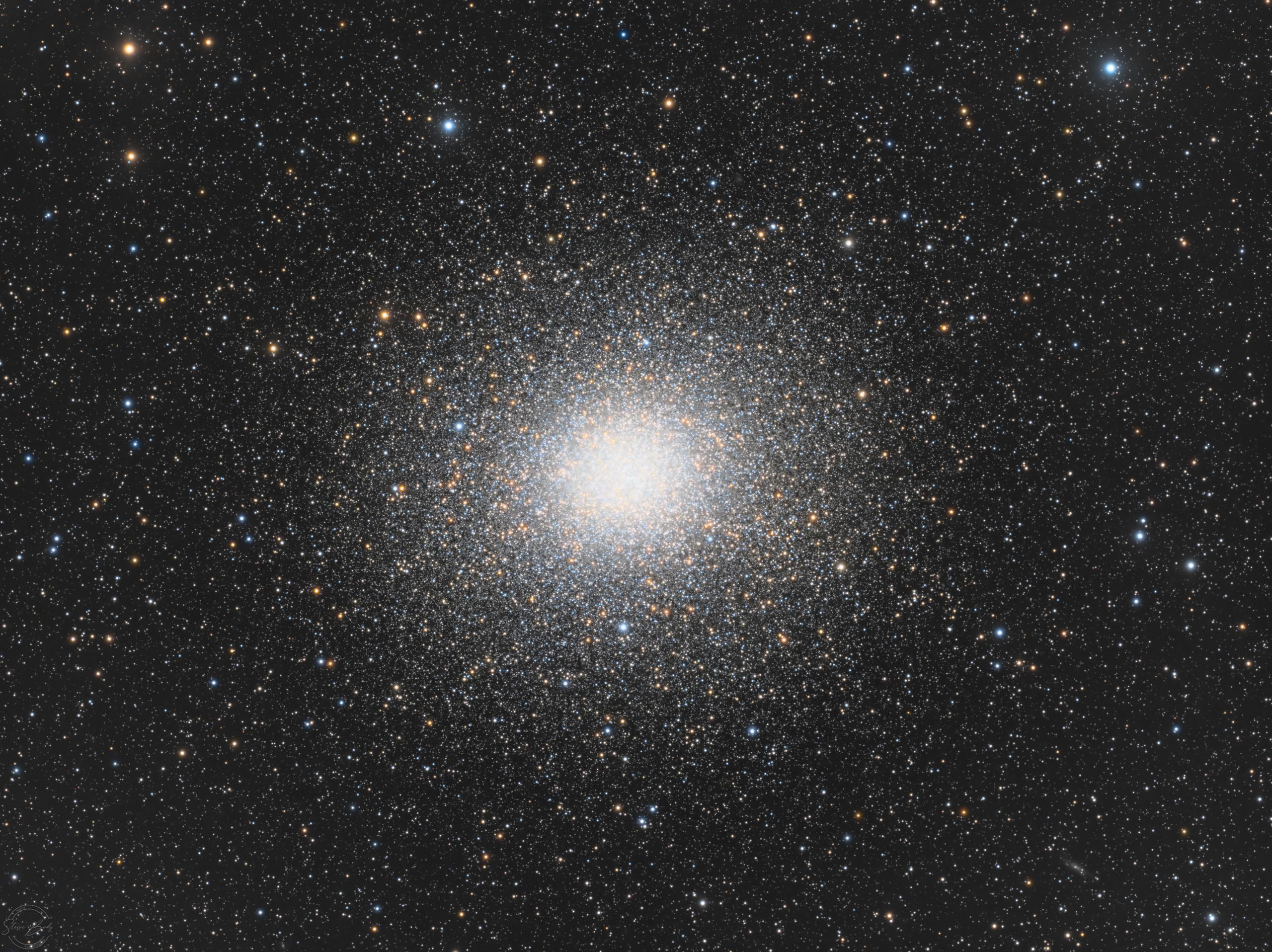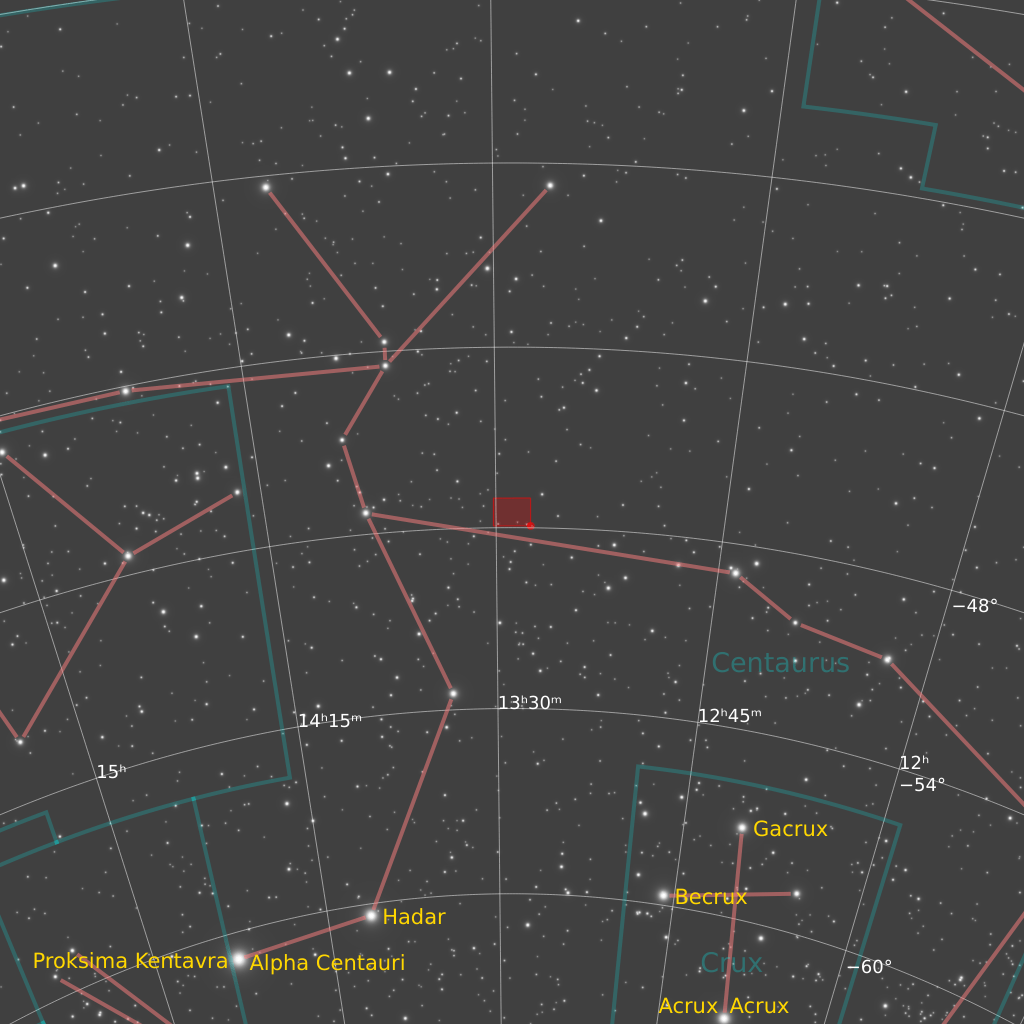Description:
Omega Centauri is the largest star cluster in the night sky.
Here are some cool facts about this object:
- Distance: Omega Centauri is located approximately 15,800 light-years away from Earth in the constellation Centaurus.
- Size and mass: The cluster spans about 150 light-years in diameter and contains around 10 million stars, with an estimated total mass of about 4 million solar masses.
- Age: Omega Centauri is estimated to be around 12 billion years old, making it one of the oldest known globular clusters in the Milky Way.
- Stellar populations: The cluster features multiple generations of stars with different ages and chemical compositions. This diversity is uncommon for globular clusters, which typically consist of a single, uniform population of stars.
- Possible dwarf galaxy remnant: Some astronomers believe that Omega Centauri may be the remnant core of a dwarf galaxy that was disrupted and absorbed by the Milky Way. This theory is supported by the cluster’s size, mass, and unusual stellar populations.
- Black hole candidate: Observations of the cluster’s core have revealed a possible intermediate-mass black hole, with an estimated mass of around 40,000 solar masses. However, this finding is still debated among astronomers.
- Visibility: Omega Centauri is visible from the Southern Hemisphere and can be seen with the naked eye under dark skies. It appears as a faint, fuzzy star-like object to the unaided observer but reveals its true nature when viewed through a telescope or captured in long-exposure photographs.


